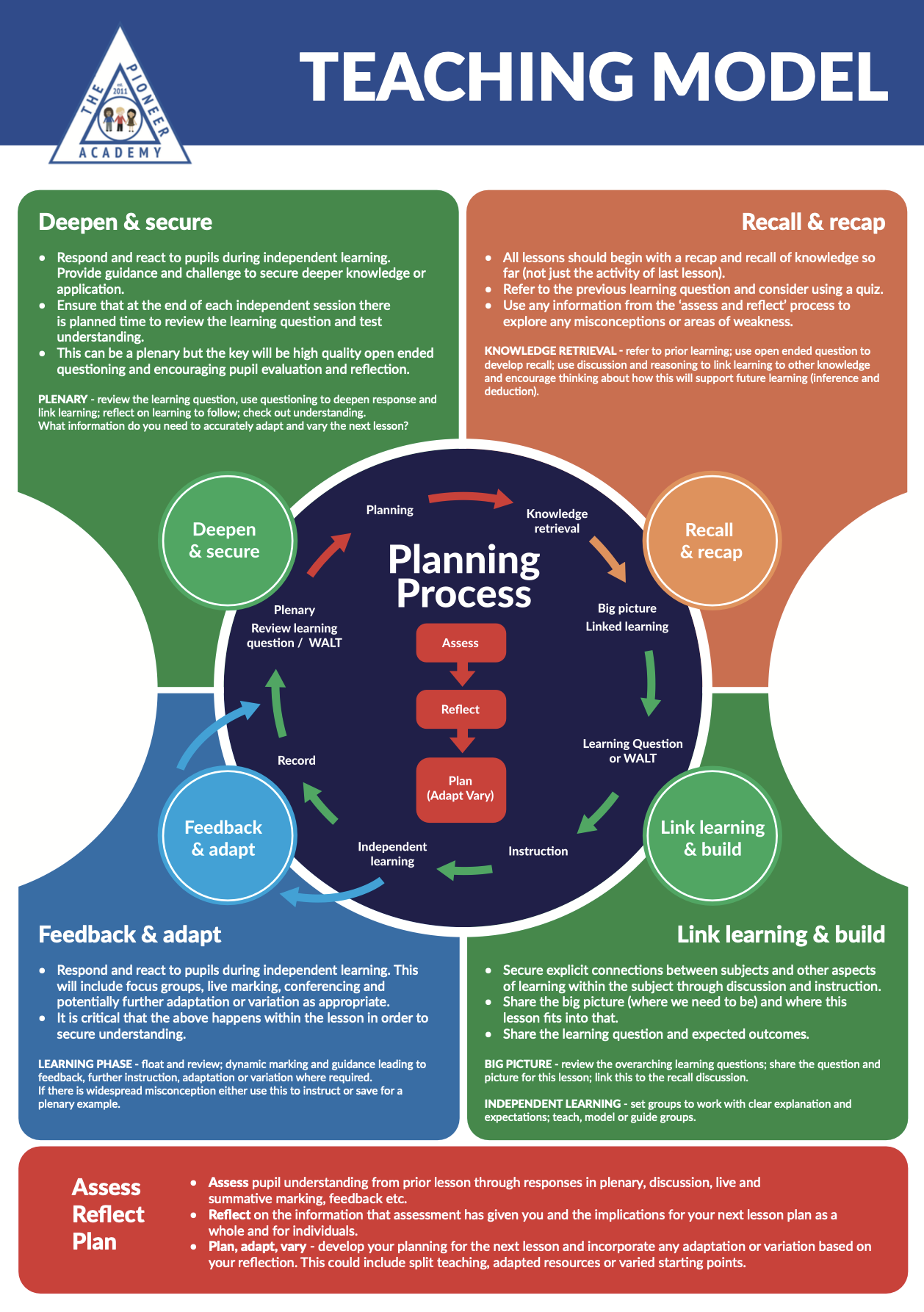Teaching and Learning
High quality teaching:
- Gives pupils some responsibility for their work and independence
- Develops well planned, prepared and paced lessons that maintain high levels of interaction with the class
- Maintains high levels of pupil involvement in tasks
- Creates a positive atmosphere in the classroom through excellent relationships
- Incorporates high levels of praise and encouragement
- Uses a variety of approaches; strategies and techniques are well selected and time is used productively
- Uses home learning effectively; particularly to reinforce and extend what is learnt in school.
- Provides carefully structured activities matched sensitively to pupils needs
- Uses Teaching Assistants to support children with particular difficulties or special talents.
- Provides ample, challenging work stemming from expert knowledge of the curriculum, how to teach it and how pupils learn
- Uses the support of a range of outside agencies
- Recognises the importance of physical learning (kinaesthetic) across the curriculum, alongside visual and auditory stimuli (VAK)
- Uses Assessment for Learning (AfL) strategies effectively, adapting plans and altering lessons to meet the needs of pupils
- Shares with pupils the success criteria
- Uses and analyses’ data to ensure the needs of pupils are met
Children learn well in a range of well – planned settings, including; paired learning, individual learning, whole class teaching and in small mixed ability and same ability sets.


